Nov 15, 2018, Varanasi, the world’s oldest living city
Slow Boat Down the Ganges Update 48
Varanasi. Arguably the world’s oldest living city. It is believed that it has been continuously inhabited for the last five thousand years. It is a major religious hub in India, particularly among Hindus, Buddhists and Jains. It is considered the most sacred among the seven sacred cities. Most devout Hindus want to die on the banks of the Ganges at Varanasi, or at least be cremated here. If that is not possible, many people come here to immerse the ashes of the dearly departed. There are over 20,000 temples here, the most famous being the Kashi Viswanath temple dedicated to Lord Shiva and the Sankatmochan temple. Varanasi also has 84 ghats, among which the Manikarnika Ghat is where people are brought to be cremated. In fact, one pyre at this ghat is said to be burning continuously for over 3,500 years and all the pyres that are lit every day for cremation, use fire from this pyre to be lit.
Dashashwamedh Ghat has become famous the world over for its evening arati. Tourists and pilgrims come to visit the arati in the thousands, something that is performed twice a day. It is truly a spectacularly choreographed performance by a set of people, complete with large lamps, incense sticks, bells, drums and gongs. People not only throng the ghat itself, bu there are hundreds of boats lined up on the river, enabling people to witness the function. I have seen this arati before, but it never fails to amaze me. Needless to say, the arati has added substantially to the revenue of everyone connected even remotely to the religious canvas it represents. Shops selling everything from religious offerings to food to clothing to toys, the local transportation, even beggars and sadhus, gain from this added population of pilgrims and tourists.



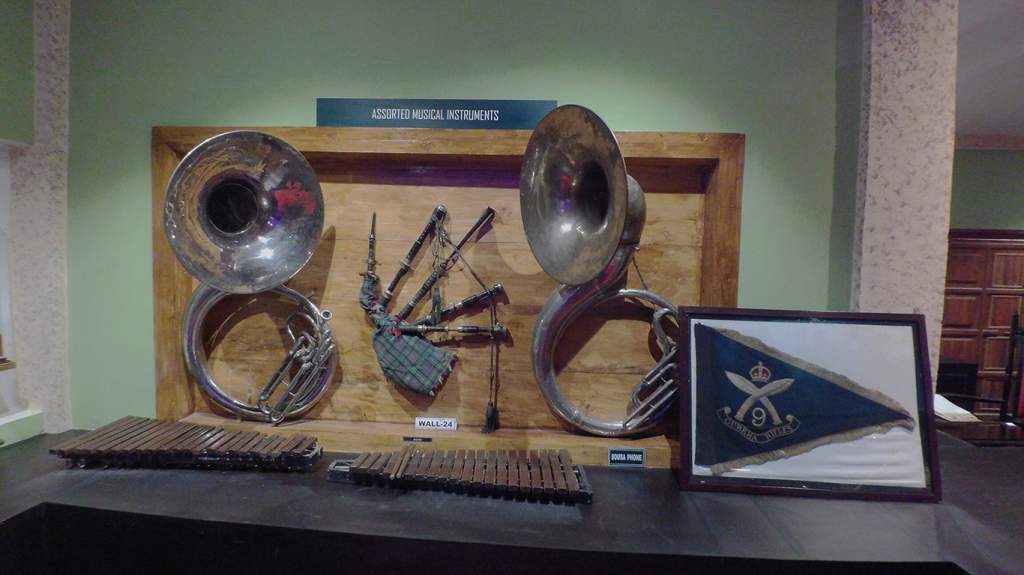

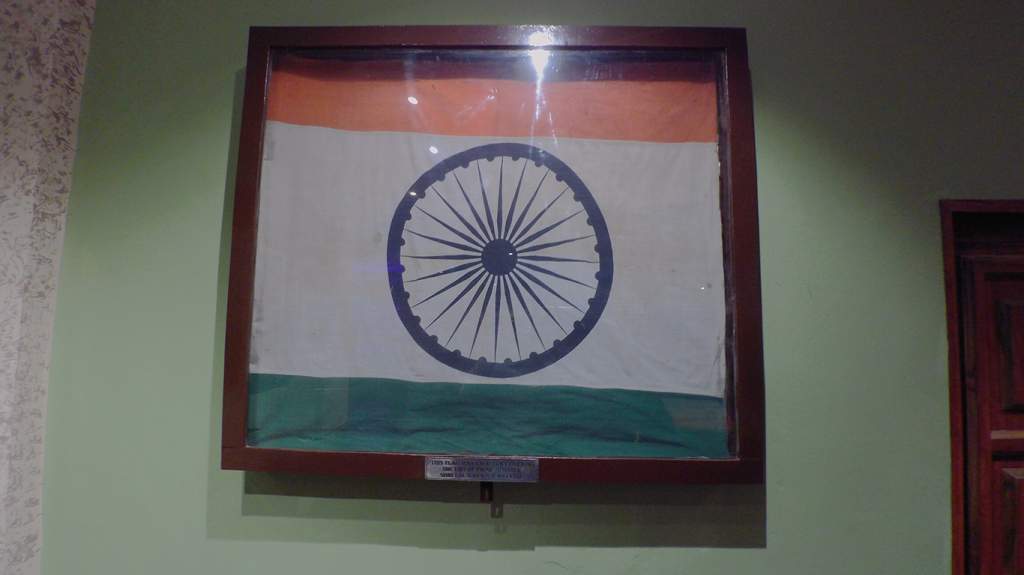
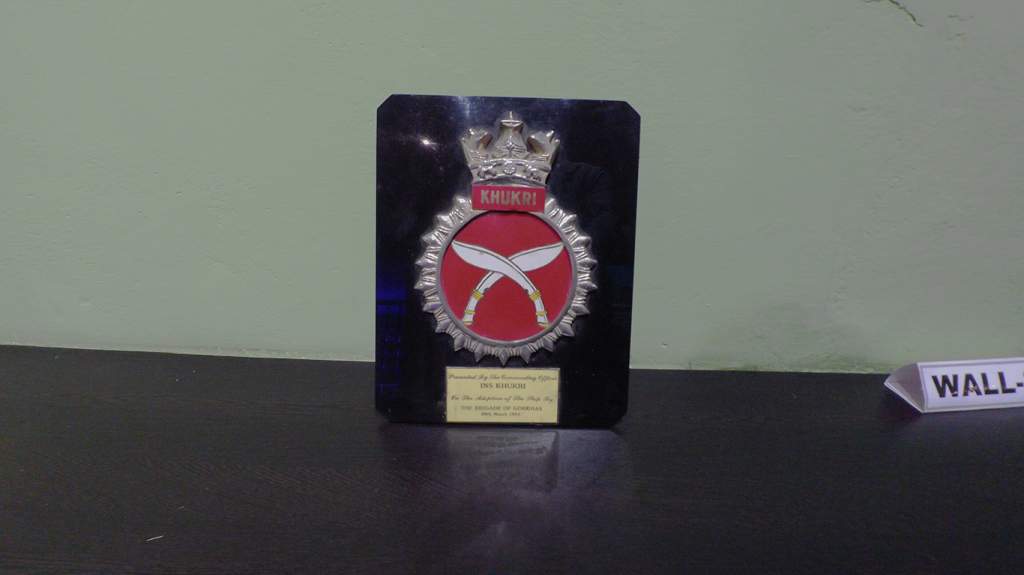
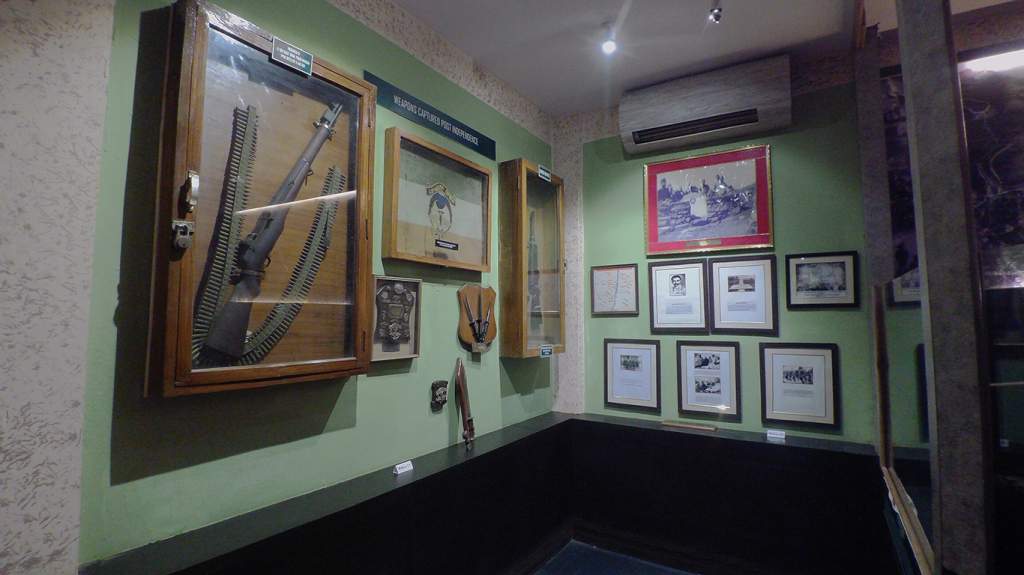

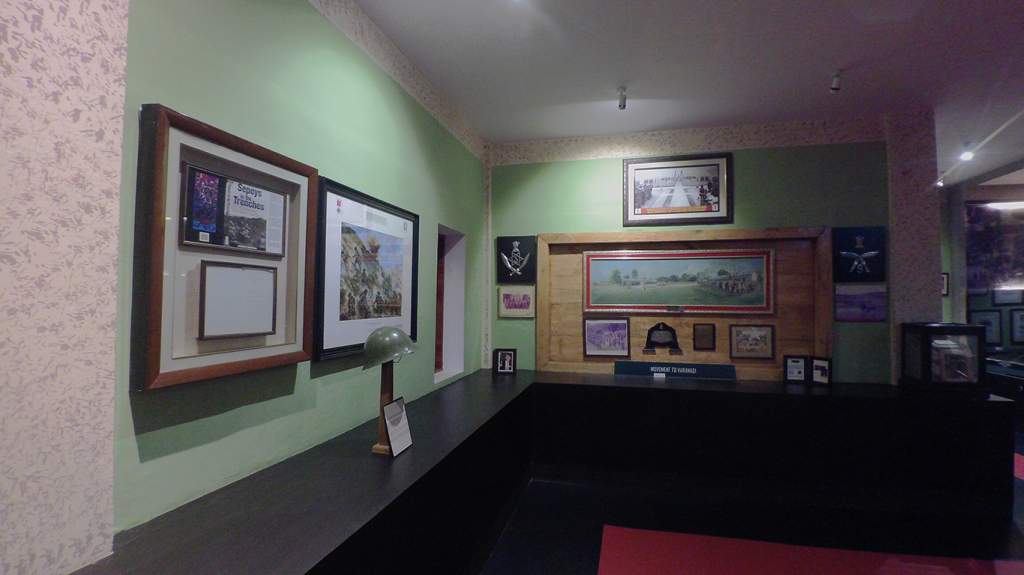



I have spent a couple of days in Varanasi. I stayed at the wonderful 39 Gorkha Training Centre, that is second home to me and my family. My father being from the Gorkhas was once the Colonel of his Regiment, the Third Gorkha Rifles, and also, being the seniormost Gorkha Officer of his time, became the President of the Gorkha Brigade. Despite twenty six years having passed since his demise, 39 GTC has always welcomed the family with open arms.

My first port of call was the Motivation Hall of 39 GTC. It was located at another building the last time I was here a few years ago, and it has since not only moved to a newly constructed building, but has got a whole new look. The Motivation Hall, is exactly what it is, a hall to motivate the new recruits with the names and stories of soldiers and officers belonging to the Third and Ninth Gorkha Rifles.
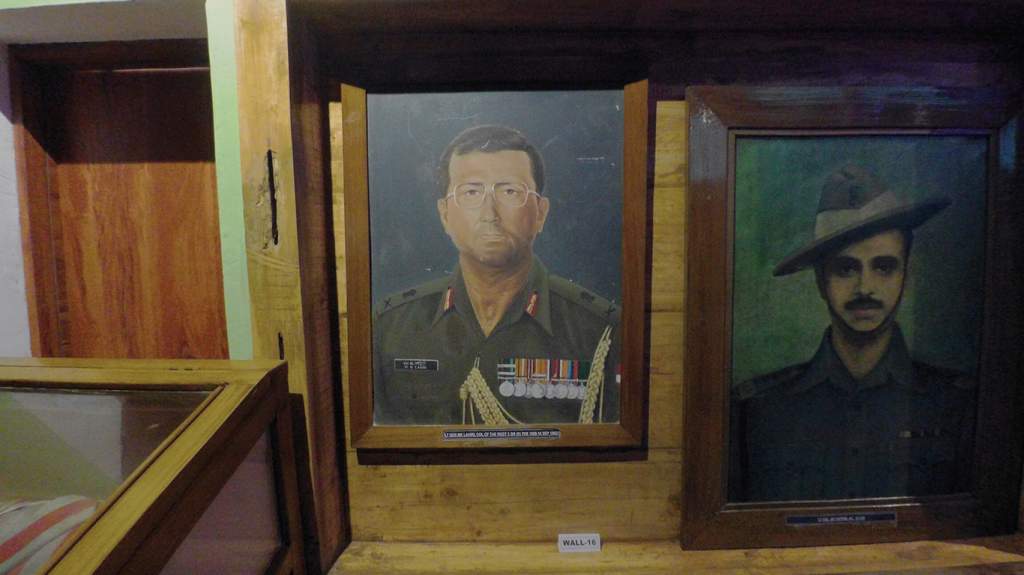

My father has a small corner in the Hall, and along with his photograph that adorns the wall, there are some items donated by mother to the Centre. It is great to be the son of such an illustrious father, and I have come to accept the fact that whatever I do, I will never ever be able to live up to the high standards he set for me.
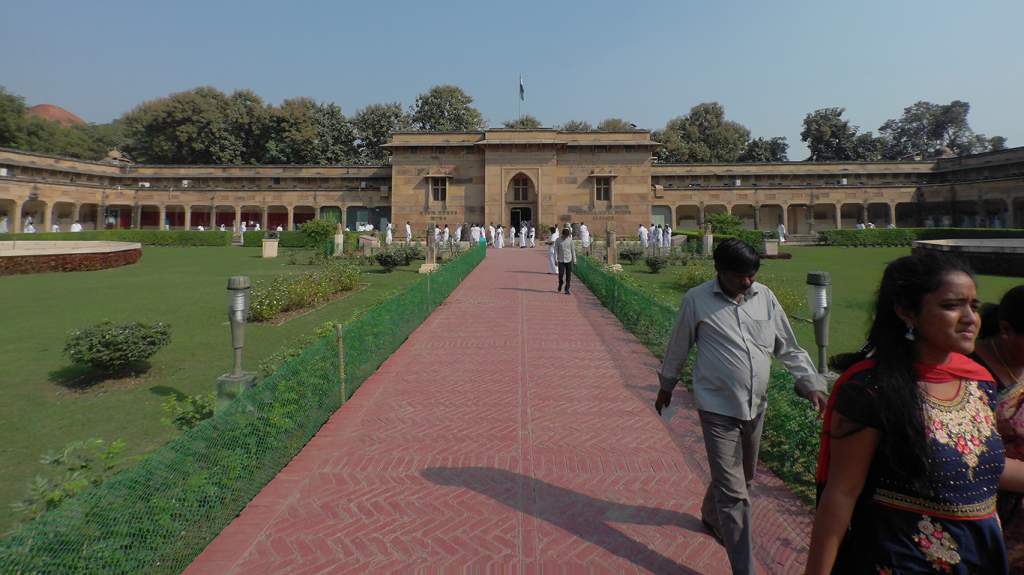
Varanasi neighbours the city of Sarnath. This is the place where the Lord Buddha gave his first sermon to his five friends, after having gained enlightenment at Bodh Gaya. It is here that Buddha first taught the Dharma, and the Buddhist Sangha came into existence. Buddhism is known for Buddha’s teachings of the Four Noble Truths, and it is at Sarnath, at the Deer Park, that he first taught these Truths.
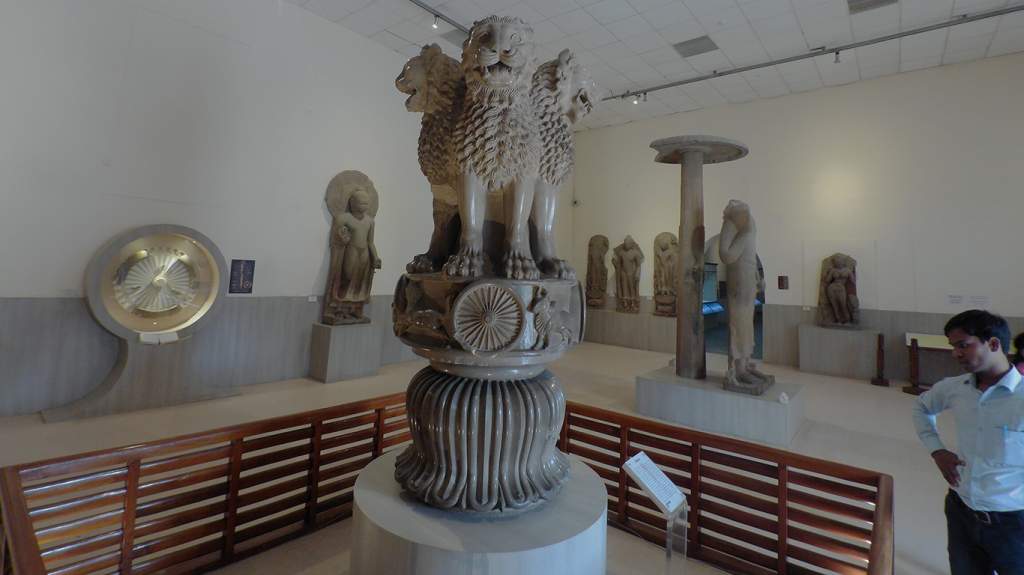
Emperor Ashoka had a major role to play in the spread of Buddhism and it is here that he built many monasteries. Most of these were destroyed by the Turks, but relics from excavations remain. Among the relics of the Ashokan Pillar. Adorning the top of the pillar was the Lion Capital that fell 45 feet from the top when the Pillar was destroyed. This Lion Capital is now the national emblem of India. It is so sacred that only Government officials are allowed to use the crest in their stationery, and only the uniformed forces can use the Lion Capital as part of their official uniforms. Remnants of the Pillar still stand where it was erected, but the Lion Capital is now housed in the beautifully maintained Sarnath Archeological Museum.





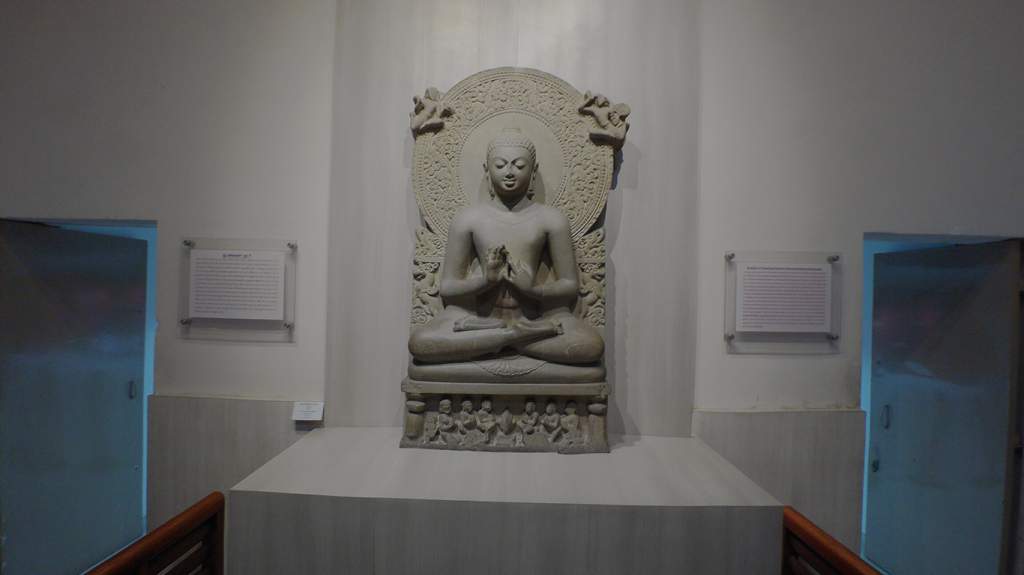




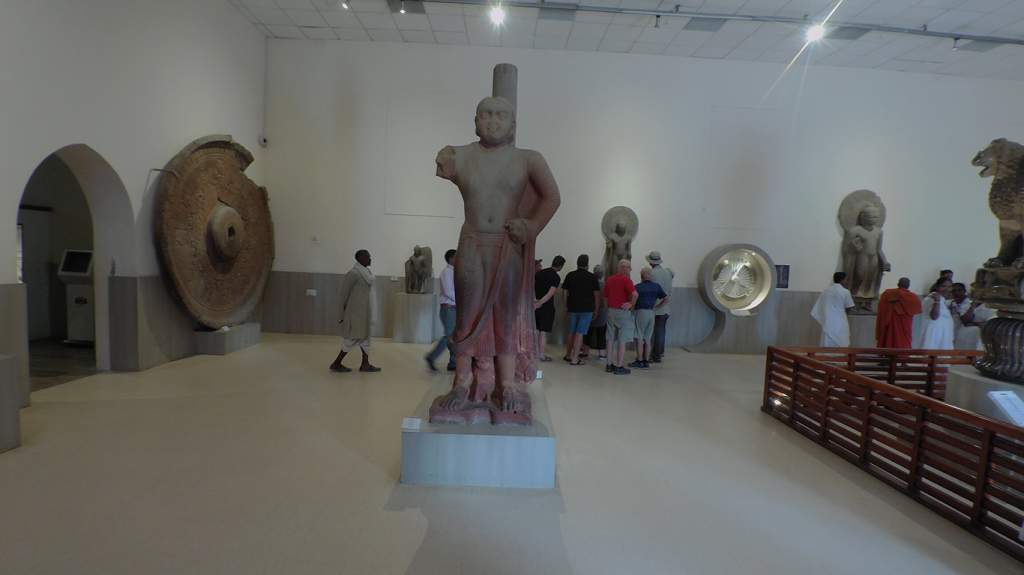

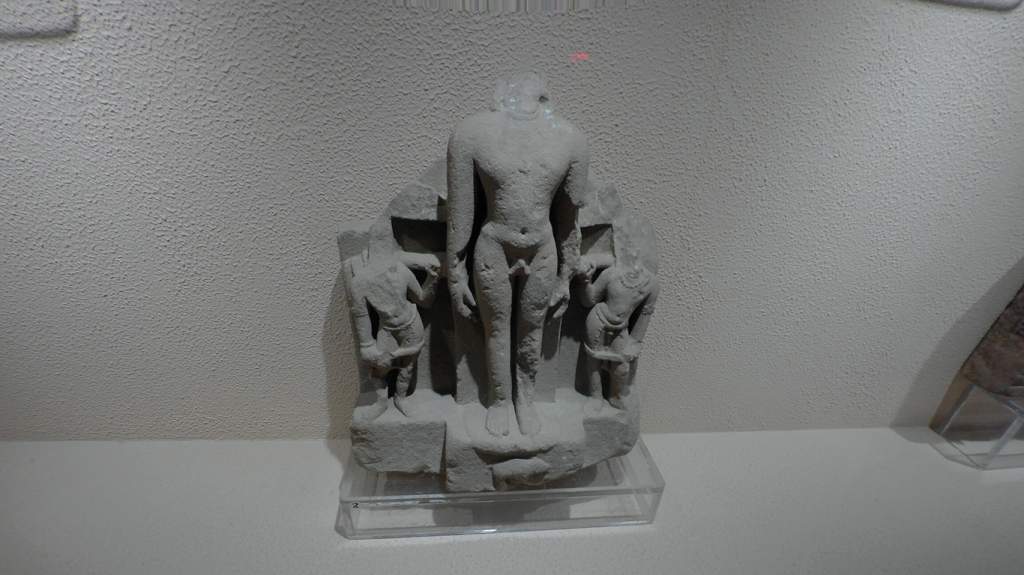



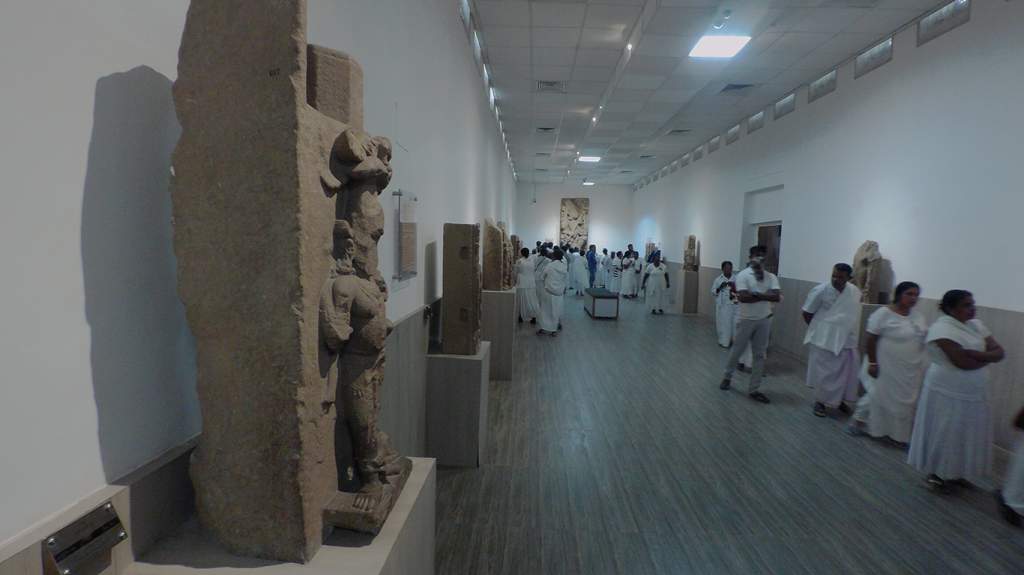


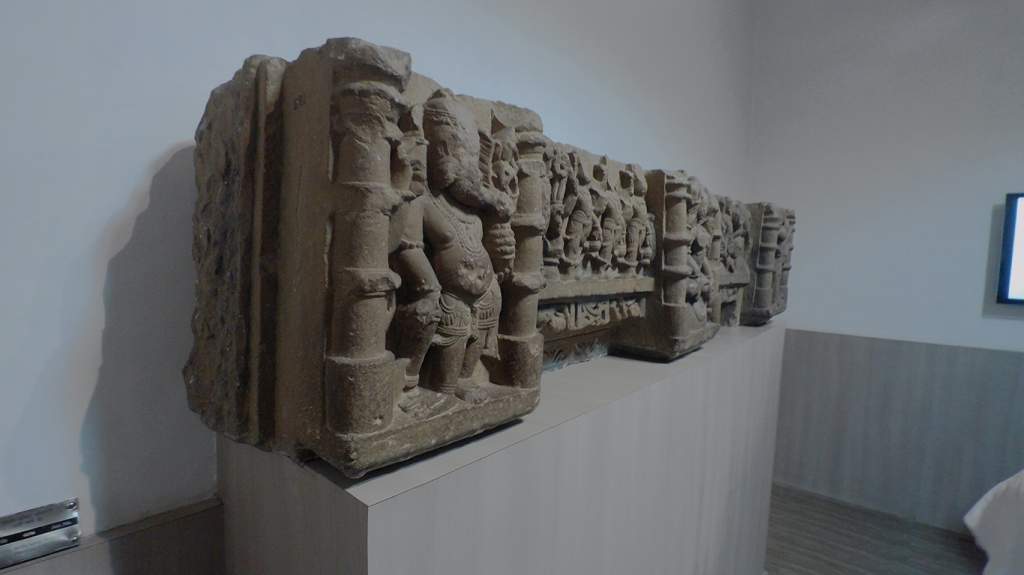




The Wheel of Dharma is another important artefact that is displayed at the Museum. This Wheel forms a part of the Indian National Flag. Unfortunately, it has only been found in parts.
The Museum is the oldest site Museum in India, completed in 1910 and houses nearly 7,000 sculptures and artefacts excavated from the site, ranging from 3 BC to 12 AD. There are numerous statues of Lord Buddha and other Bodhisattvas.

A visit to Sarnath is a must for every person visiting Varanasi, if for nothing else to have a glimpse of the start of Buddhism at the very spot where it took root, and the many efforts of Emperor Ashoka to propagate it as the State religion of his Kingdom. Also to be noted is, had it not been for the British and the excavations they carried out at Sarnath, history may not have even recognised that Buddhism as a religion started in India. Indians in general, and Buddhists in particular, have a lot to be thankful for to the British for having discovered and preserved the origins of Buddhism.
I needed to visit an ATM and as I walked the road I met an autorickshaw driver Babu Khan. I was generally having a conversation with him, asking him where all to go through the day, and he volunteered to take me around. He seemed like a nice enough person and asked for a thousand rupees for the entire day. And to be honest, he was totally worth it. A wonderful person, very genial, and took me to places and through streets he did not really need to. I have his contact details and anyone who wishes to visit Varanasi and the surrounding areas, is welcome to call him at 9670190113. He has been very good to me and I do not think you will be disappointed either.
I wanted a boat ride. Not again, I hear you say. I agree with you. Haven’t I have had my quota of boat rides? But then, a boat ride with the local boatmen would give me the opportunity of getting to know the stories of the many ghats. And it would be nice to have someone else doing the paddling for a change.
A brief conversation happened with a boatmen, who decided to charge me an arm and a leg, and the rest of my life as mortgage for the ride, and I promptly decided against it. I would get enough opportunities to film the ghats when I paddle past them, and did not want to pay Rs 8,000 for the knowledge. A quick thanks-but-no-thanks to the boatman, and a short autorickshaw ride later, saw me at the gates of the Varanasi Fort at Ramnagar.

The Ramnagar Fort is where the Kashi Naresh, or the Maharaja of Varanasi and his family still reside. Unfortunately, the fort is in major disrepair, and I doubt that it will survive for too many more years given the current state of upkeep. There is a wonderful Museum inside the Fort premises (photography strictly prohibited) that houses some amazing items. From palkis, to houdahs, to bejewelled clothes worn by the Maharaja and his family, weapons and arms of all kinds, crockery, ceramic displays, many vintage vehicles, etc. All of them coated in a fairly thick layer of dust and rusting. The upkeep and maintenance leaves a lot to be desired, and unless it is maintained by some organisation that can find the funds to maintain the fort and the Museum, soon enough there will be nothing left to see. It is, I believe maintained by the family, and that can never provide enough money to do what is required. Unless of course, the fort is turned over into a heritage hotel and the money generated used for the upkeep. It is a wonderful fort and the history it depicts is obvious. It is unfortunate that it is in the state that it is.

I am not a religious person, and did not want ot visit the many famous temples located at Varanasi. It is crowded, and the path is not terribly clean. Babu Khan suggested I visit the Kashi Vishwanath temple. I “lied” to him saying that I had already visited that temple. He said that it was not the old temple he was talking about but the new temple that has been constructed within the campus of the Benaras Hindu University. It is truly a beautiful temple, clean surroundings, and not as terribly crowded as some of the more famous temples.

Benarasi silk is famous all around the world. Important functions like weddings, particularly Bengali weddings, are incomplete without the bride being draped in the finest Benarasi saree the family can afford. It is not technically Benarasi silk, since the silk comes from all around the country, but the weaving of the silk into exquisite designs.
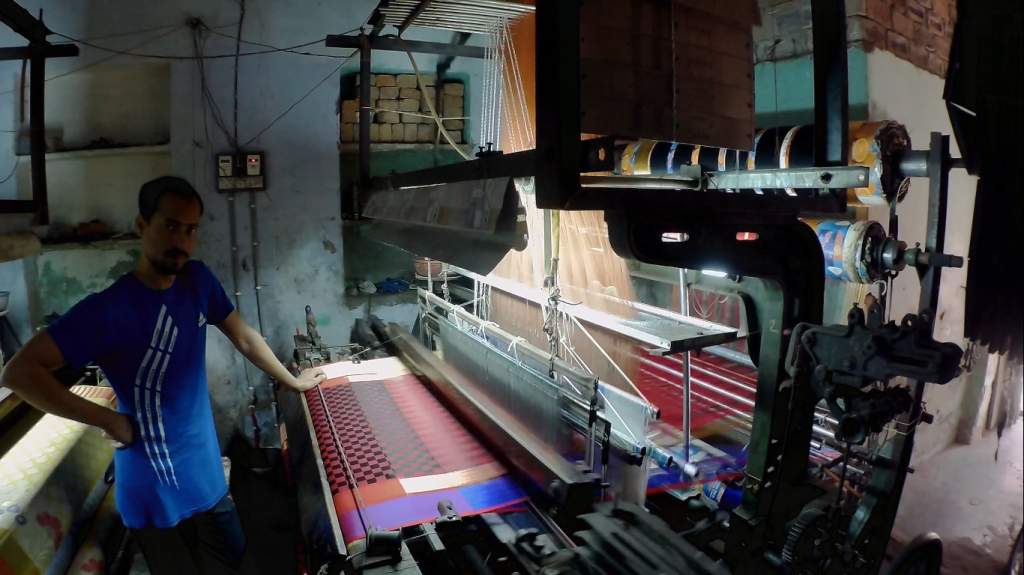
I have never visited a weaver’s colony and this was an opportunity. The colony is a series of maze-like alleyways, decidedly poor, but each house has a loom inside. The famed Benarasi silk is woven in these bylanes. Unfortunately, the handlooms are fast giving way to powerlooms, and in the next generation or so, the art of hand weaving Benarasi silk might well be lost to history. The demands of increasing volume gives rise to this transition, and maybe rightly so.

A single saree can take about a month to weave by hand, much much faster with the use of power. But the reality of losing an age-old skill is not something that we should allow or accept.
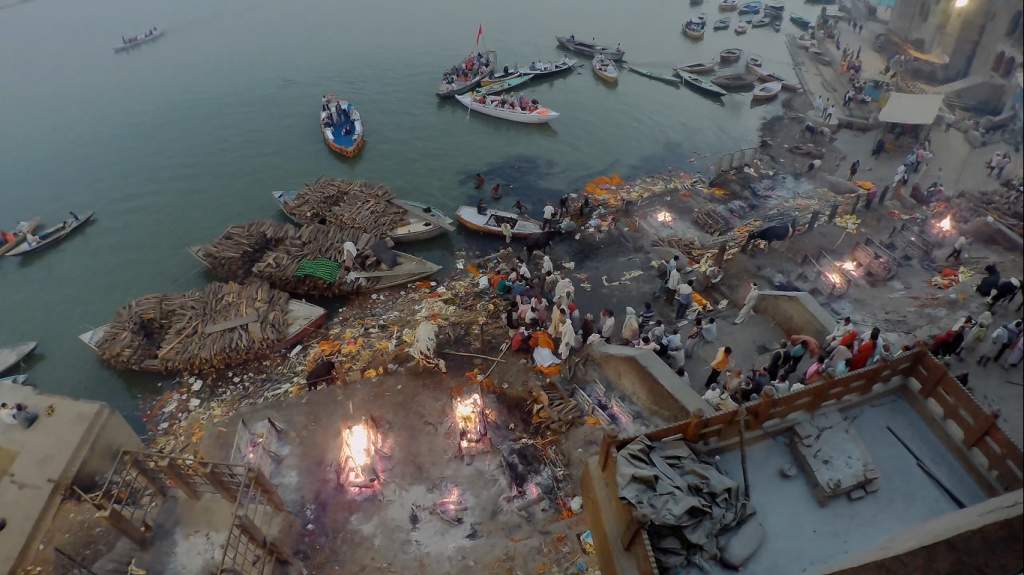
Then it was back to the ghats of Varanasi, and I headed to the most famous ... or most morbid ... depending on which way you look at it. Manikarnika Ghat is where the dead are cremated. The cremation goes on all day and all night, twenty four hours, non stop. Just as I was starting to focus my camera, I was admonished by someone, “No photography.” He thought I was a foreigner. Surprising, since I do not look like one, but that is something that I have witnessed during my visit to Varanasi ... being mistaken for a foreigner. And when I start speaking in Hindi, the brows furrow and then a smile breaks out.
The person admonishing me was a youth called Rahul. He was one of the big daddy's of the ghat and repeated that no one was allowed to take photographs. After a fairly lengthy conversation, I told him of my journey, and his tone changed. He immediately granted me “permission” to film the ghat, despite his earlier assertions of permissions being granted only by some other higher authority.
I agree, that for many people, filming the burning corpses can be a exercise in documenting morbidity. When exposed to my gyan about pollution, and the Namami Gange project, and Clean India initiative, and my limited role in it thanks to A SLOW BOAT DOWN THE GANGES, he became a fan and personally took me around the ghat and showed me places from where I could film. When the conversation started with Rahul, fresh corpses arrived for cremation and were undergoing the ritual bath. By the time Rahul accorded me “permission” that particular activity was over, and no new corpses were in line. Rahul has promised to meet me at the ghat when I pass by!
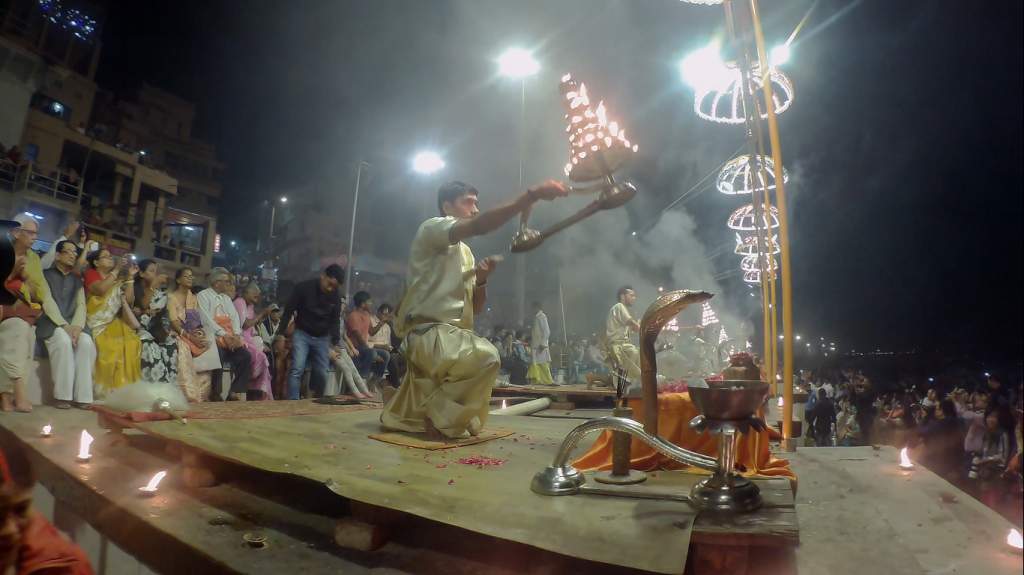
It was nearly dusk and the world famous evening arati at the Dashashwamedh Ghat was about to start. I headed there and witnessed, once again, the wonderful obeisance that is so artfully and aesthetically choreographed to the River Goddess.
There seems to be something wrong with one of my two cameras. It is shutting down for no apparent reason. That is not good. I already have had my primary GPS give up on me, and now the camera is acting up. I am glad that I have at least a second camera with which to film the progress. Just about half of the expedition is over and I still have the second innings to play, and I would rather have two cameras to depend on than just the one. It is still working and I hope it lasts me a few more weeks till the end of this expedition.
I really miss a camera that is GPS capable. That way I know where and when the picture was taken, Now, I am often at a loss to remember the location where I took a picture. It is impossible for me to write down or otherwise document each clip and photograph. A geotagged camera will solve a lot of problems. Hopefully this expedition will provide the opportunity for some organisation to associate with me on the next one and sponsor the filming equipment. I have a wish list in mind, and many be one of them will come good.
It is now off to what was once called the badlands of India ... eastern Uttar Pradesh and Bihar. I have four or five days paddle left in Uttar Pradesh before I head into Bihar. I have met some absolutely wonderful people so far and I am hoping that continues. The inherent goodness of humankind is what I have come to expect and I hope that benevolence continues to be bestowed on me.
Surprisingly, the almost the slowest internet connection I have experienced so far has been in Varanasi. I have two connections, Jio and Airtel. Both have been equally abysmal. But since I was staying put in Varanasi, I could spend time trying to upload the progress. Further downstream I do not know what the status of connectivity is going to be like, and I do not know when I will be able to upload the progress again. Soon, I hope.
Another week or so and I will start counting down, with more than half the route completed. I look forward to reaching Calcutta and spending time there. Many of my well-wishers, friends and family are located there, and I am hoping that I will receive a warm welcome there. Here’s to hope and its immense potential to keep the spirits soaring.




 (3 votes, average: 5.00 out of 5)
(3 votes, average: 5.00 out of 5)![]() Loading...
Loading...





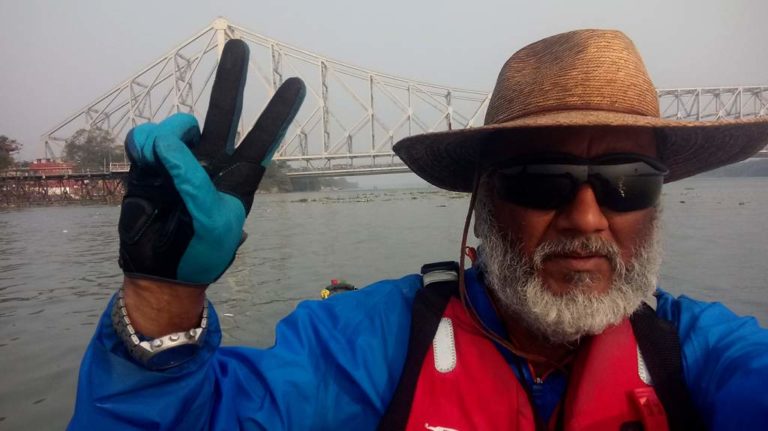


This is a real nice coverage on Varanasi.Thoroughly enjoyed reading .
I studied at Varanasi for two years in 65-66 .
A new Ganga starts now.
Thank you so much Sir. Varanasi is a great city, a holy city, the world’s oldest living city. A drive through BHU was also very nice. The temple there is beautifully built. The city would have changed quite a bit since 65-66.
I am looking forward to the next stage of paddling. Some say the badlands of India.
Not your current objective but you could spend time writing about foods from Varanasi. Or for that matter down the Ganges.
I would love to do that, but I do not have and will not have the time to explore different foods in different cities. One reason is that I am staying mostly in ashrams en route. Wanted to explore food, clothes, cultures, but finding it exceedingly difficult, apart from what I am experiencing staying with the villagers.